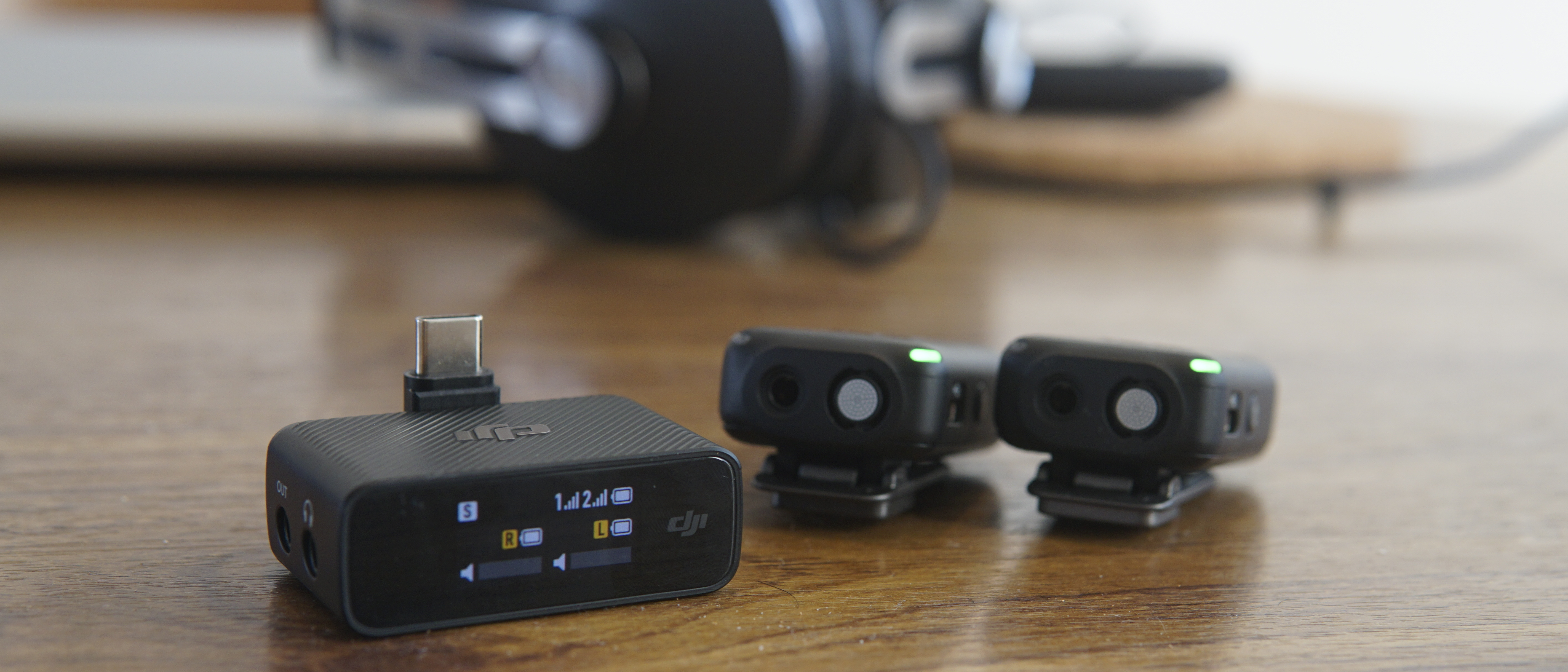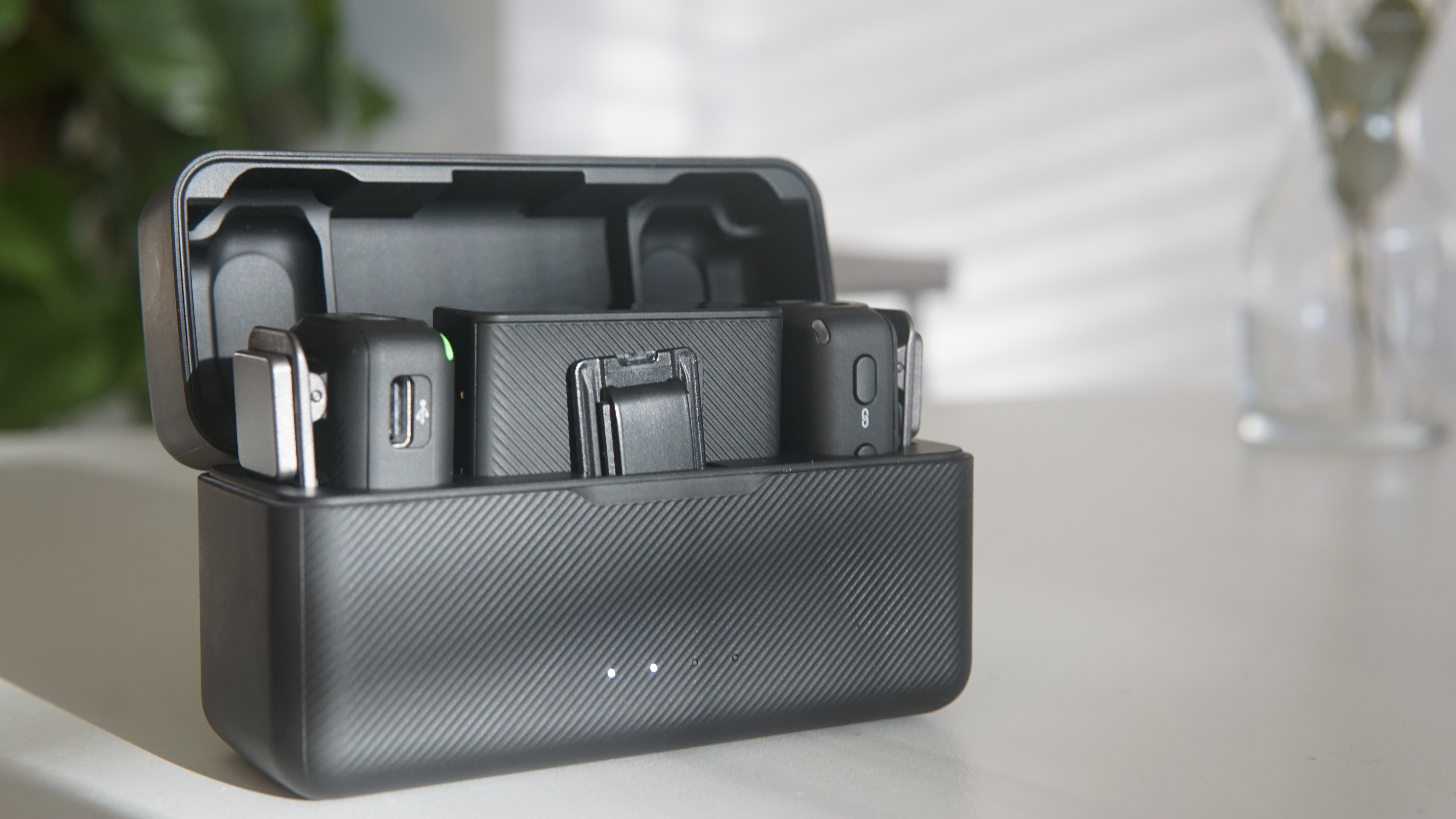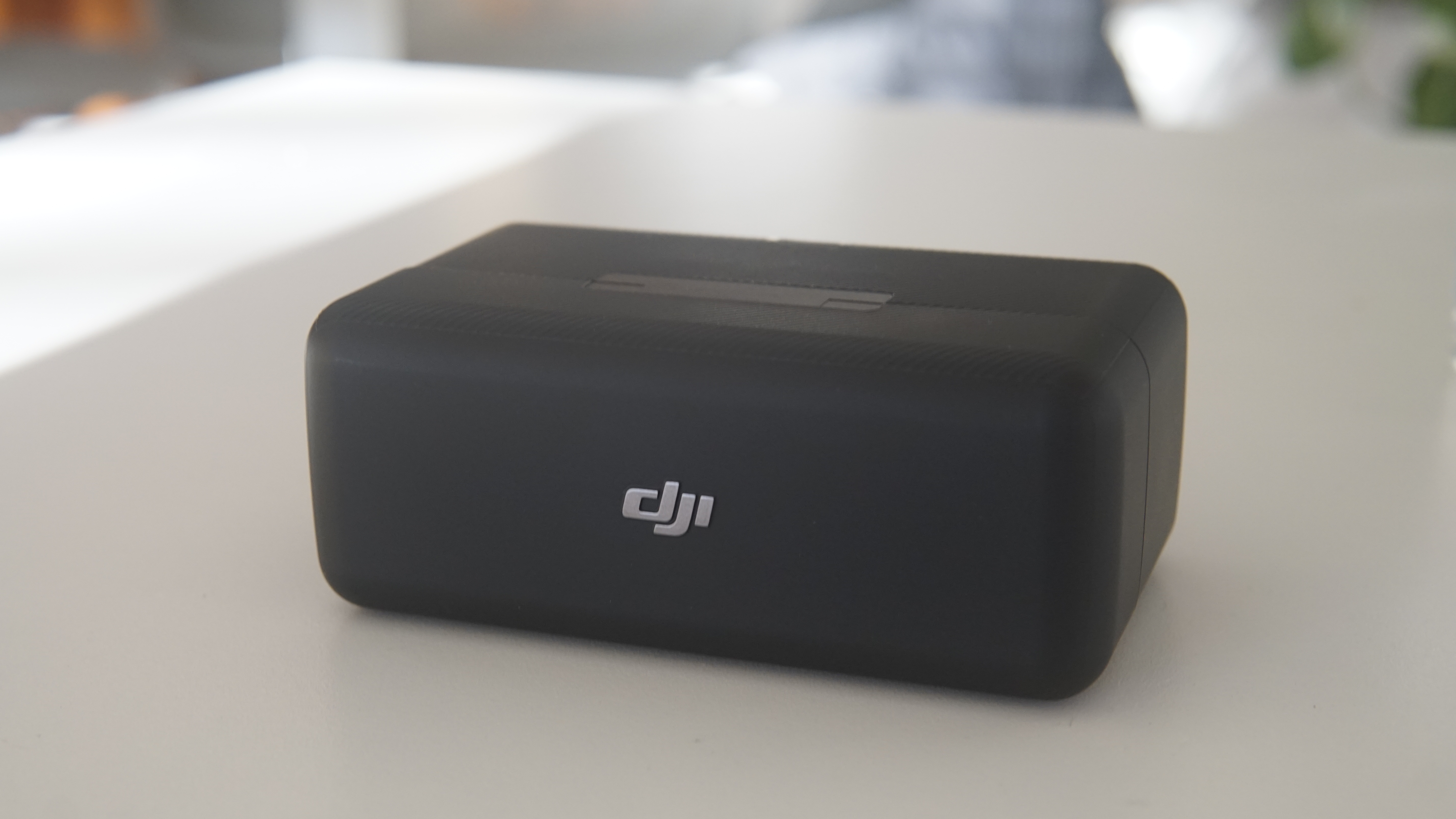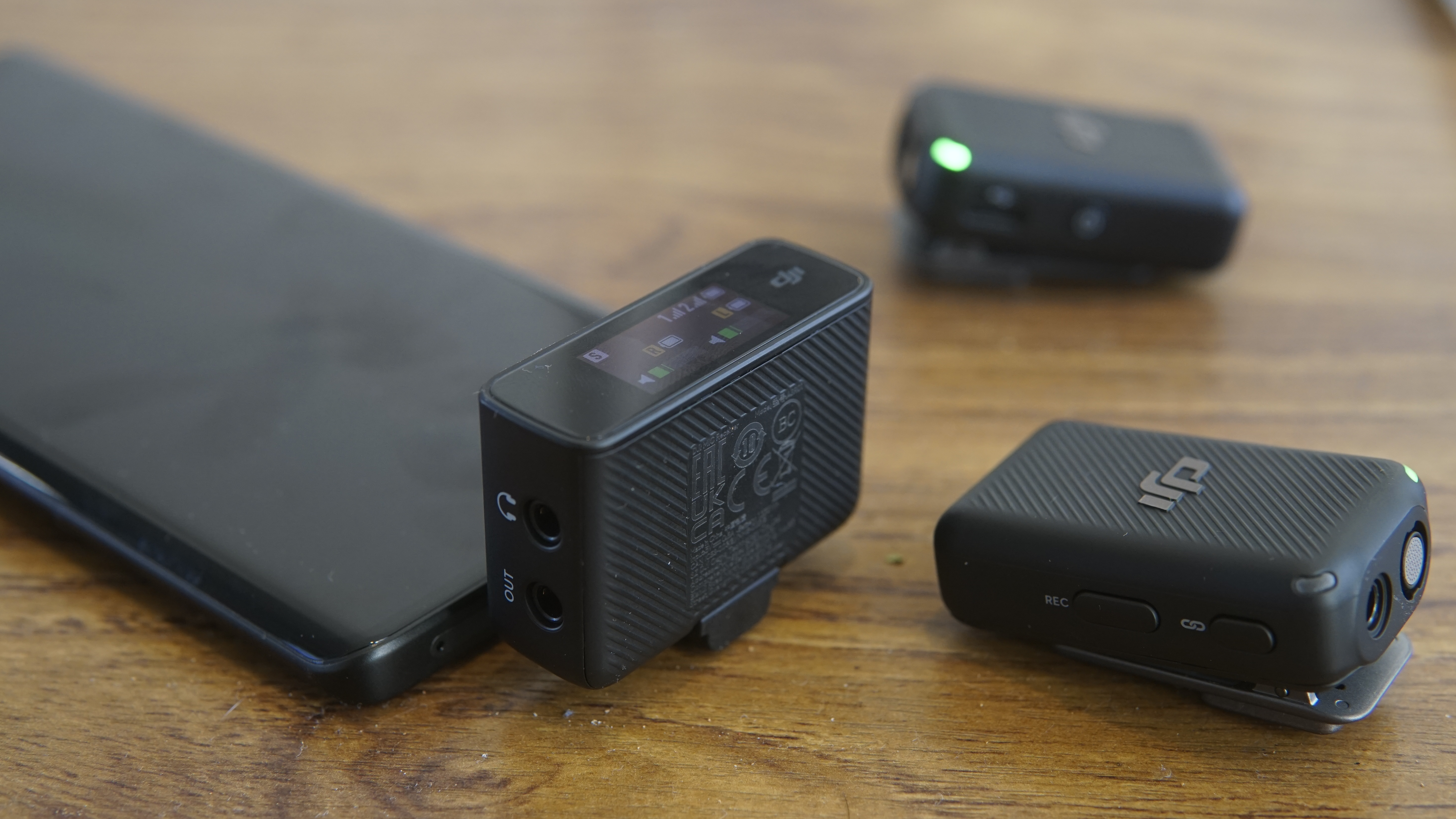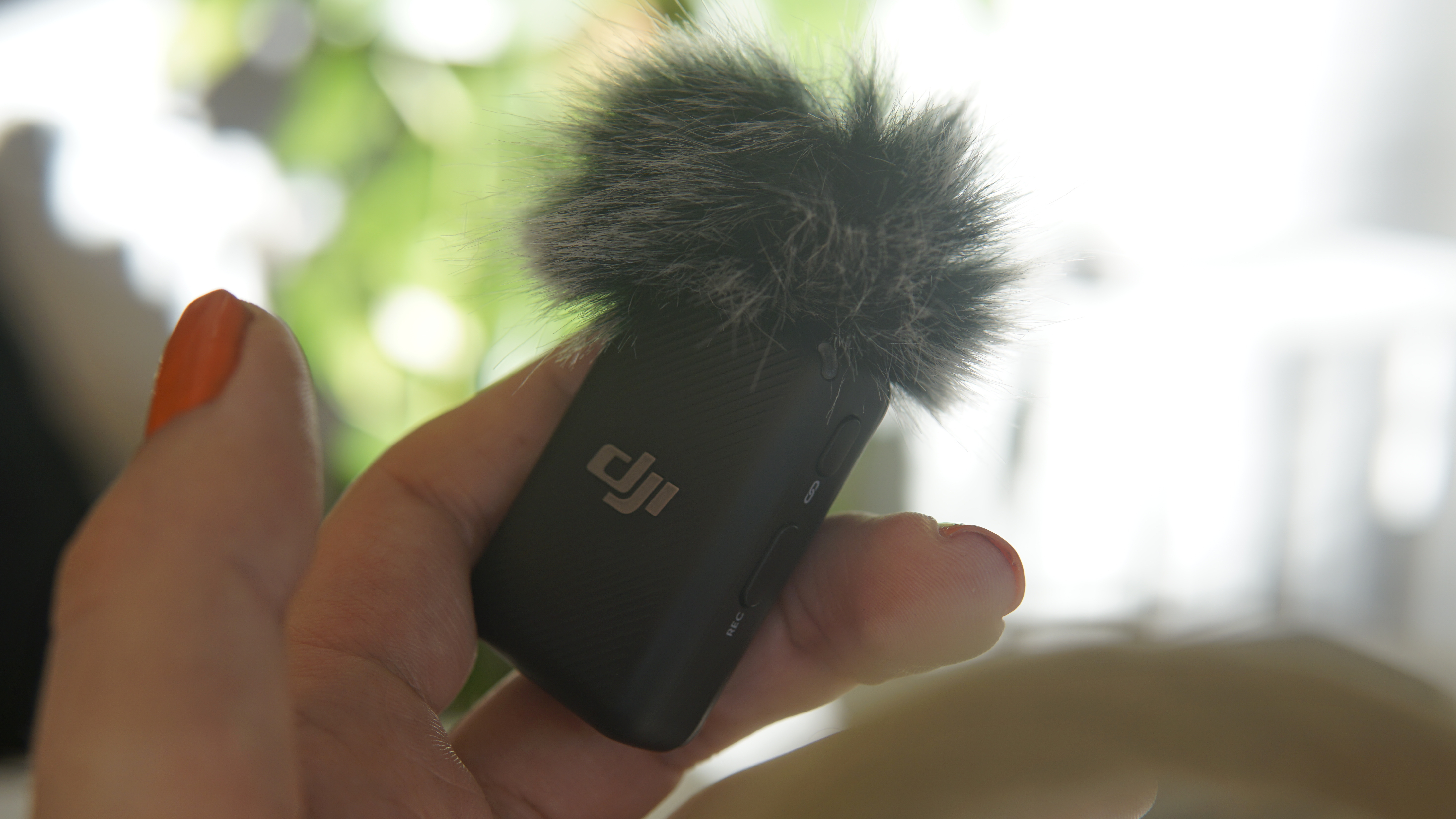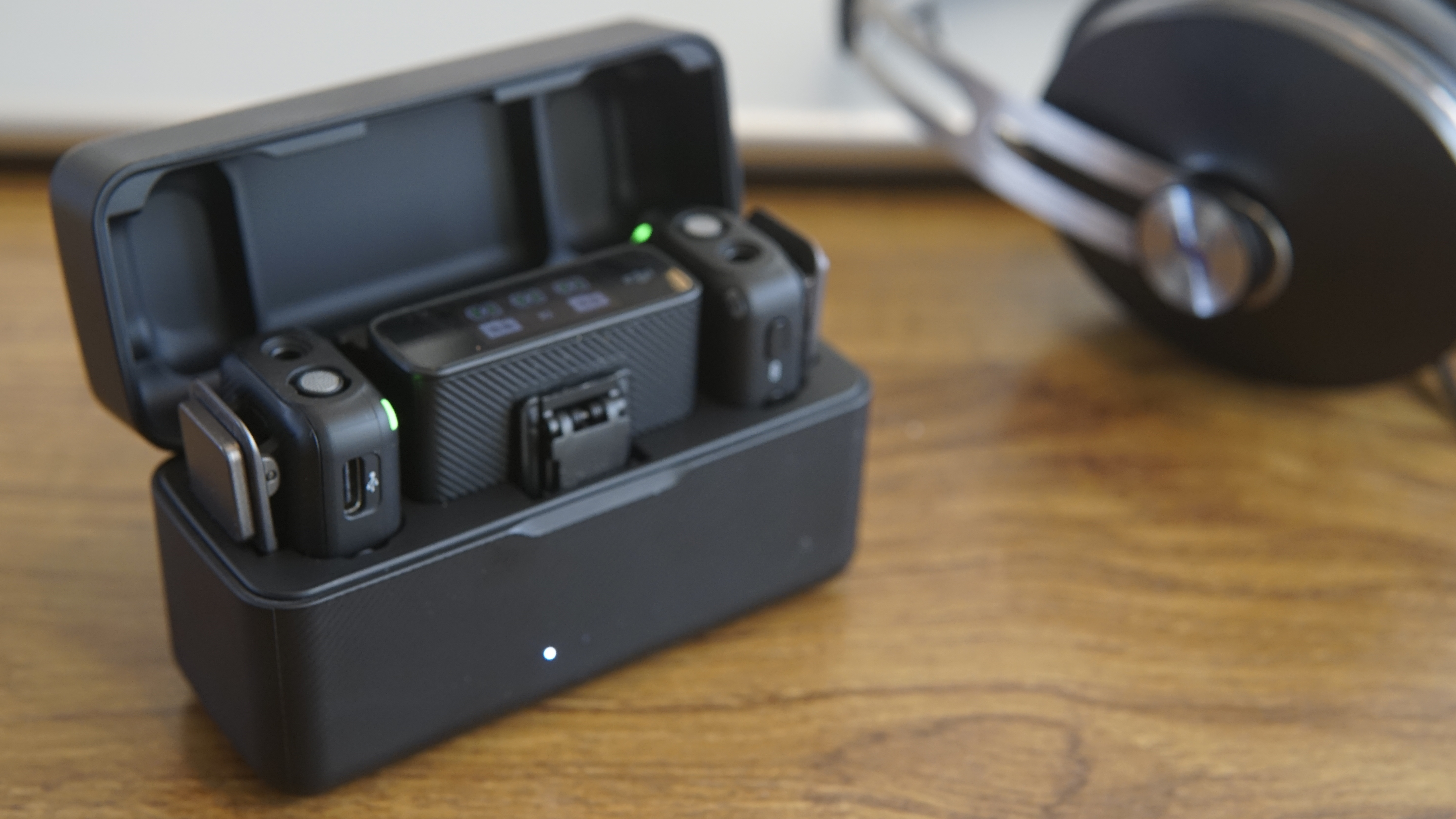Digital Camera World Verdict
In true DJI fashion, this is a hugely usable mic system for just about anyone. Its audio is clear, with easy gain adjustments to prevent clipping, and the clever, self-contained charging case puts it ahead of the competition. Compatible with a broad range of devices, it’s an ideal solution for on-the-go recording and content creation.
Pros
- +
Long-lasting battery and charging case
- +
Super user-friendly
- +
250m transmission range
Cons
- -
Pricier than Rode Wireless Go II
Why you can trust Digital Camera World
The DJI Mic is something new. Although DJI is known for its drones, it’s also known for branching into new product areas. The firm’s broad remit also includes action cameras, handheld gimbals, and now, microphones. The DJI Mic is an easy, all-in-one wireless mic system designed to work with basically anything – cameras, smartphones, laptops, and not just DJI cameras.
Essentially, it’s two transmitters and one receiver, allowing the user to field a cost-effective and portable two mic system. The transmitters each contain an omni-directional microphone, as well as inputs for an external mic, and it all comes in a charging case that considerably extends the battery life.
It’s basically the same proposition as the Rode Wireless Go II microphone system, which also first arrived in 2021, putting the two in pretty direct competition. How does it stack up? Let’s take a look.
Specifications
- Components: 1x receiver, 2x transmitters, charging case
- Receiver gain adjustment: -12dB to +12dB
- Recording modes: Mono, Stereo, Safety Channel Mono
- Wireless transmission range: Up to 250m
- Connections: USB-C, Lightning, 3.5mm audio jack
- Battery capacity: 320 mAh (receiver/transmitters), 2600 mAh (charging case)
- Weight: 24.9g (receiver), 30g (transmitters), 162.2g (charging case)
- Accessories included: Hot-shoe adapter, USB-C adapter, Lightning adapter, 3.5mm TRS cable, 2x clip-on windscreen, carrying bag
Key features
The DJI Mic feels premium right off the bat. Open up the sleek, self-contained charging case and you’ll find the transmitters and receivers blinking green, paired up and ready to go. One of the first things that will catch your attention is the little LCD touchscreen on the receiver – this is the hub of the system, where you’ll find yourself controlling most of its functions.
It may seem like a small thing, but the charging case really is the MVP of the DJI Mic. Not only does it give you a huge, portable source of power that allows you to keep recording for up to 15 hours or so without needing a charge, but it also automatically pairs the transmitter and receiver whenever they’re dropped back in, which saves a load of fiddling. Charging the three constituent parts of the Rode Wireless Go II requires three separate USB-C power sources, or doing them one at a time. The DJI Mic charging case can charge everything at once, and only needs one USB-C cable.
Design and build
The receiver screen is relatively easy to use – a little fiddly perhaps, but once you get the hang of the swiping motions required, it becomes second nature. You can swap from mono to stereo, and designate which transmitter corresponds to the right and left speaker. A tap of the power button locks and unlocks the screen, which is handy if you want to guard against any accidental alterations. By default, it’ll display the input levels of both mics, making things easy to monitor, and on the side is a headphone jack.
The transmitters are well-sized and pleasingly light – clip them onto your clothing and you’ll forget they’re there as easily as a careless politician. The clips themselves also have small but powerful detachable magnets, which can be used as an alternative means of attaching them to clothes or metallic surfaces. In a nice touch, the kit includes two miniature wind shields for the transmitters, which easily twist into place and give you a little noise protection when you’re outdoors.
The best camera deals, reviews, product advice, and unmissable photography news, direct to your inbox!
In the case, you’ll find the USB-C and Lightning adapters, making it easy to set up the mics with an iPhone or Android smartphone. There’s also the hotshoe adapter for the receiver, intuitively labelled and easy to slot into place. You get the sense that even someone who had never touched a microphone before would have a pretty easy time setting up the DJI Mic.
Performance
The DJI Mic does everything it needs to do extremely well, with excellent audio quality. While you may find that when you first start recording you’re getting a fair amount of clipping, the touchscreen makes it extremely easy to turn down the receiver gain for your device and/or situation to keep things clean.
And what’s more, if you’re still worried, you can use the receiver’s touchscreen to activate safety channel mode – this is a separate track that records with a volume of -6DB, and is a great way to prevent your audio from being irreparably blown out by a sudden loud noise. It’s a real boon that you can do this internally – on the Rode Wireless Go II, the kit needs to be hooked up to the Rode Central computer or mobile app to access this feature.
The wireless transmission range is touted as up to 250m. Practically, this is as far as you’re ever likely to need it to go – we found that we could interfere with the quality by being deliberately obnoxious and placing a bunch of obstacles between ourselves and the transmitter, but it’s going to be fine for the majority of real-world use cases. And even if you do encounter a problem, the transmitters record internally, so you’ll have a clean copy of your audio.
Verdict
In practical terms, the DJI Mic is going to cost you more than the Rode Wireless Go II, but the huge real-world advantage of its powerful charging case makes a real solid case for it being worth the extra dollars. Having advanced functionality centralised in the touchscreen receiver is also hugely helpful, and cements the DJI Mic’s status as a truly streamlined audio solution for content creators.
Jon spent years at IPC Media writing features, news, reviews and other photography content for publications such as Amateur Photographer and What Digital Camera in both print and digital form. With his additional experience for outlets like Photomonitor, this makes Jon one of our go-to specialists when it comes to all aspects of photography, from cameras and action cameras to lenses and memory cards, flash diffusers and triggers, batteries and memory cards, selfie sticks and gimbals, and much more besides.
An NCTJ-qualified journalist, he has also contributed to Shortlist, The Skinny, ThreeWeeks Edinburgh, The Guardian, Trusted Reviews, CreativeBLOQ, and probably quite a few others I’ve forgotten.
